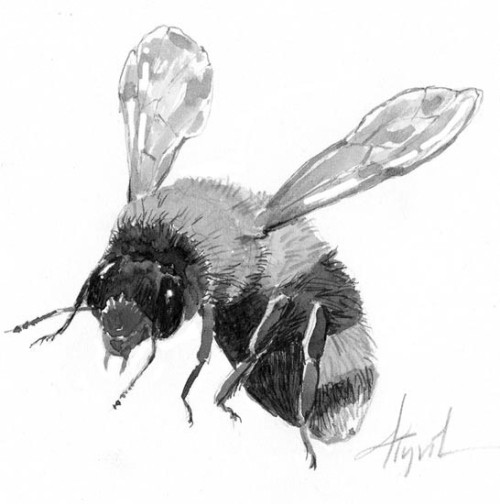
In early summer, my roses are buzzing with bees. European honeybees from my hives are tripping over the tiny metallic native bees while burly black and yellow bumblebees, the sumo wrestlers in this ring, shoulder through the stamens.
It would appear all is right with bees. But it’s not. Everyone knows honeybees are in trouble, but bumblebees are also in worldwide decline. In North America, several species are extinct, or perilously close to it.
“You can find lots of bumblebees out there, but the biodiversity is really going down,” said Kent McFarland of the Vermont Center for Ecostudies. Last year, a VCE sampling showed some alarming results: of the 17 species of bumblebees historically resident in the Green Mountain State, four could not be found.
“Anywhere they’ve done any surveys, it’s the same story. It’s pretty bad. I don’t think there’s anything unique here,” said McFarland.
Leif Richardson, a Dartmouth doctoral candidate who researches bumblebees, agrees: “We don’t have a complete picture yet. But in my opinion, things are pretty bad for bumblebees and some other native bees. There are lots of studies that have shown declines in species of bumblebees over time” – from the Northeast, Midwest, West, and the Canadian province of Ontario. “At the same time, some species have become much more common,” Richardson said.
James Strange, a research entomologist and bumblebee specialist with the U.S. Department of Agriculture’s Agricultural Research Service, said perhaps as many as 20 percent of the 38 or 40 (depending on how you count them) species of bumblebee in the U.S. are in trouble.
Essentially, this is the story of our age, whether it’s birds, butterflies, amphibians, or small mammals. Biodiversity is taking it on the chin.
“There is a theory of ecosystem resilience, which says that as we lose more and more of these species, our ecosystems become less able to withstand major changes. So while one species may disappear or decline, and that is not going to affect our food chain, it raises the pressure on the functioning of the ecosystem and stakes go up with each species we lose,” said Strange.
In bumblebees, the problem is masked somewhat by sheer numbers – there are still a lot of bumblebees out there – and by the difficulty in telling them apart. Color and size aren’t always a good gauge, and scientists must often resort to charting facial shape and body part measurements.
Different facial shapes and tongue lengths enable species to pollinate different types of plants, contributing to diversity in vegetation. And bumblers are important pollinators. They can fly in colder temperatures and in rainy weather when honeybees are loath to leave the hive. Worldwide, notes Richardson, wild bees, including bumblers, are one of the most important crop plant pollinators. In the U.S. and Europe they are sold commercially for pollinating hothouse plants like tomatoes and cucumbers.
So what is causing some bumblebee species’ slide toward extinction? It’s probably several factors, some of which might affect certain species and not others.
The conversion of fields and pastures to housing lots, row crops, or forest undoubtedly has an effect. “In the northeast some of the bees that are disappearing are ones that do very well on some of the plants we grow in pasture,” said Strange. Pathogens such as Crithidia bombi and Nosema bombi may play a part as well. The particular Nosema strain playing havoc with bumblers in North America apparently came from Europe with bees bred for greenhouse pollination. Pesticides? Maybe. Not enough research has been done, said Strange. “I won’t say it’s not a factor – it probably is – but we just haven’t gotten there yet.”
What’s the answer?
Increased public awareness about the plight of pollinators is good, but researchers say more is needed. It would help if homeowners, farmers, and ranchers sowed bee plants at the edges of lawns and fields; also, if there was more money for research and captive breeding of species in trouble, and if there were limits on the movement of biological material that has caused so much environmental havoc around the globe.
Even if those things are implemented, it will probably be too late for species such as Franklin’s bumblebee, Bombus franklini, of the west coast, or the rusty-patched bumblebee, Bombus affinis, of the eastern U.S.
But McFarland isn’t giving up. He’s getting ready for the second year of the Vermont Bumblebee Survey, this time with a focus on the southern Champlain Valley and the Northeast Kingdom. They could use more volunteers, he said. The more volunteers, the more data; the more data, “the greater the chance that we can learn what’s going on.”

